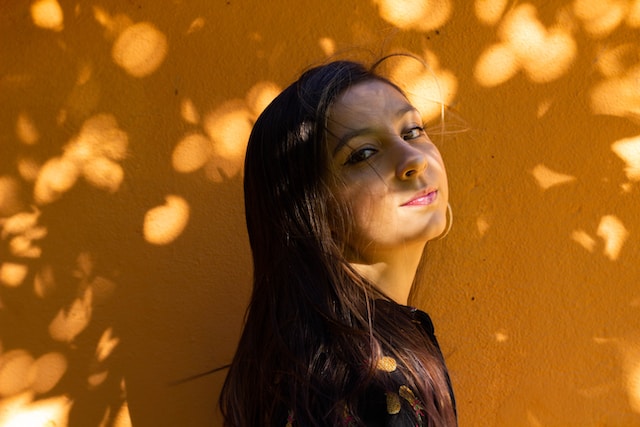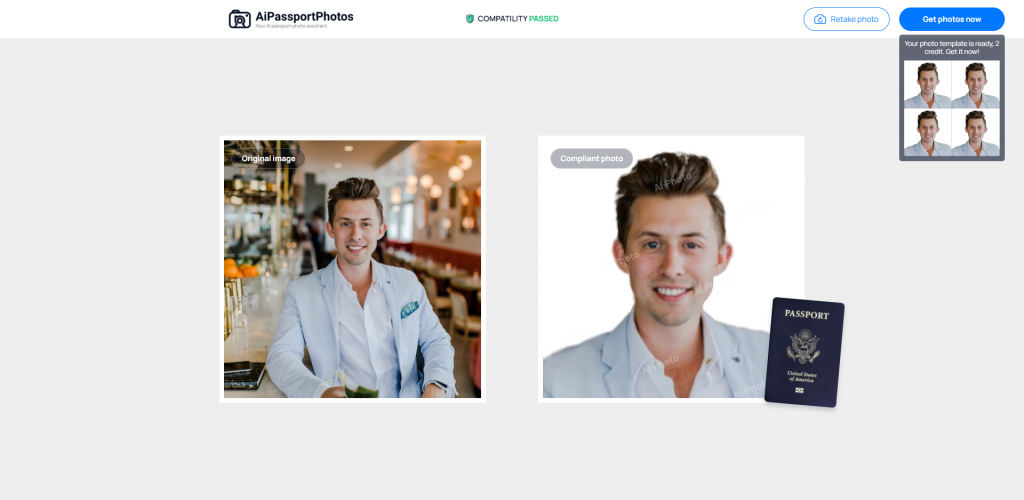As passport photo maker applications become more and more popular, people tend to take a photo for passports by themselves instead of seeking a photographer. However, without photography skills or the help of professional equipment like light reflectors and photo lamps, it is easy to generate shadows in the photo. Here comes an important issue – whether a passport photo is acceptable to have shadows.
According to the American government, applicants must not have shadows on their faces or their background.

As passport photos are not allowed to be modified with Photoshop, it seems difficult to avoid shadows, but there are still some tricks. Read on to learn about how to take photos without shadows.
Are Shadows Acceptable? — No!
Honestly speaking, shadows are not acceptable in passport photos in most countries. Even if there is no clear statement about shadows, we do suggest you not leave them on identification photos.
A passport is an important document to verify cross-border travelers’ identity. The photo on it must present the passport holder’s appearance without distractions while shadows are considered part of them that hinder facial features.
Accessories like glasses and jewelry easily cast shadows on the face, neck, chin or shoulder. The subject would also project shadows on the background if standing too far away. All these are very likely to be rejected.
There are also shadows around the ears. That is acceptable, but don’t leave it to cover large areas.
Let’s make a summary. Please make sure the passport photo you submit doesn’t have shadows except for areas around your ears.
What Causes Shadows?
In order to make a shadow-free photo at home, we need to know some common mistakes that generate shadows first. Shadows usually result from where the subject stands and in which direction the light shines.
Uneven Lighting
Shadows usually result from uneven lighting of multiple light sources. When the light source is in the front, the shadows appear at the back. When the light source is set by either side, the shadows appear on the opposite side. The stronger the light is, the deeper the shadows and the higher contrast will be.
Camera Flash
Using a flip-up or built-in flash to shine on the subject directly would cast a hard light shadow on the wall behind it, so it is better to turn it off or use supplementary external flashes.
Incorrect Subject Placement
Another reason that results in shadows is the location of the subject. Standing either too far or too close to the background would cast a shadow behind the subject.
Accessories and Decorations
There would be a shade under the brim of a hat, so hats, caps and similar headgear are not allowed unless for religious reasons. Glasses might project shadows around the eyes, so it is also prohibited unless for medical reasons. Additionally, shiny accessories like sequins, beads or diamonds would also reflect light, thus creating unwanted cast or shadows. Check this article for more details about glasses in passport photos.
How to Take a Passport Photo at Home Without Shadows
If you have ever taken photos in a studio, you must have seen professional photographers set up spotlights and light reflectors around you. Seems spectacular, doesn’t it? Few of us have similar equipment and crews, but it doesn’t mean mission impossible to take a passport photo without shadows. Here are some useful tips.
Make Use of Natural Light
We usually have ceiling light at home which is not the primary choice for passport photos. Don’t try to use lamps to imitate studio spotlights. The wattage is far from satisfactory at all. Therefore, the best light source is natural light. Choose a sunny day when the whole room is lightened up but the sun doesn’t come in through the window directly.
Stand in front of a window and face the window or ask the subject to do so. Sometimes, the daylight might dim part of your body. Then you should adjust your position to make sure the whole face is evenly lit. Add some artificial lighting on the opposite side if you have to stand by either side of the sunlight.
Keep a Distance Between You and the Background
Stand in front of the wall for approximately 1-2 feet (30-60cm) which is the perfect distance to avoid casting shadows on the background. Supposing there is no white wall in the naturally-lit room, you can hang up an unwrinkled white sheet as a backdrop or use AiPassportPhotos to automatically tune the background into the colors required by the service you choose.
Set the Camera at the Proper Distance
No matter what device you use to take a shot, either a smartphone or camera, place it 2-7 feet (0.6-2m) away. Therefore, selfies at arm’s length are not acceptable. It is recommended to use a tripod to hold the device at eye level.
On the condition that everything is prepared, try to take a few shots and choose the best among them. If there is any imperfection, you can adjust either the background, position or equipment and retake a new picture. In order to ensure the acceptability of the passport photo, you are supposed to be patient during this process.
Use Passport Photo Editor
It is known that it is not allowed to edit, beautify or add special effects to passport photos with software like Photoshop, using AiPassportPhotos to crop and remove the unqualified background is permitted, so you don’t need to bother finding a white wall or background with shadows.

It offers you the chance to take passport photos wherever you are and you could have digital photo templates.
Once the picture is uploaded, the online tool would act as an AI officer to check whether it meets all official requirements, eliminating the trouble of being rejected because of unnoticeable errors like shadows.
Summary
Shadows are obvious and common mistakes that lead to passport photo rejection. Now we believe that you are acquainted with whether a passport photo can have shadows and what causes the shadows. Please make sure your face, neck and background are clear of shades. Once you decide to take passport ID photos on your own, remember to avoid uneven lighting, improper position and equipment setting. If necessary, it is suggested to use certified tools to find out any possible mistakes and reduce the chance that your passport application is halted.